The featured image – photographed by fellow traveller Ian Millar, to whom my thanks – shows John M (a very capable nature guide/driver/researcher/educator) radio-tracking a leopard.
All of the leopards in Okonjima are 100% wild animals, but some have been “darted”, then fitted with radio-transmitter-equipped collars.
Okonjima, in central Namibia, is centrally focused on wildlife conservation and research, which is in large part funded by tourism.
At the time Ian took the featured image John had located unmistakable evidence of a leopard having very recently dragged his/her “kill” across the track on which “our” vehicle was driving…
John knew – from the radio signal – that the leopard in question was a female he called “Lila”, and that she and her kill were somewhere near to us.
A couple of minutes of “off-track” driving later, the radio signal made it clear that they must be very close to us.
They had to be in or near one particular tree.
John parked the vehicle near to it.
For several more minutes, none of us could see a leopard.
Then, suddenly, we realised that Lila was there, in the brush at the tree’s base.
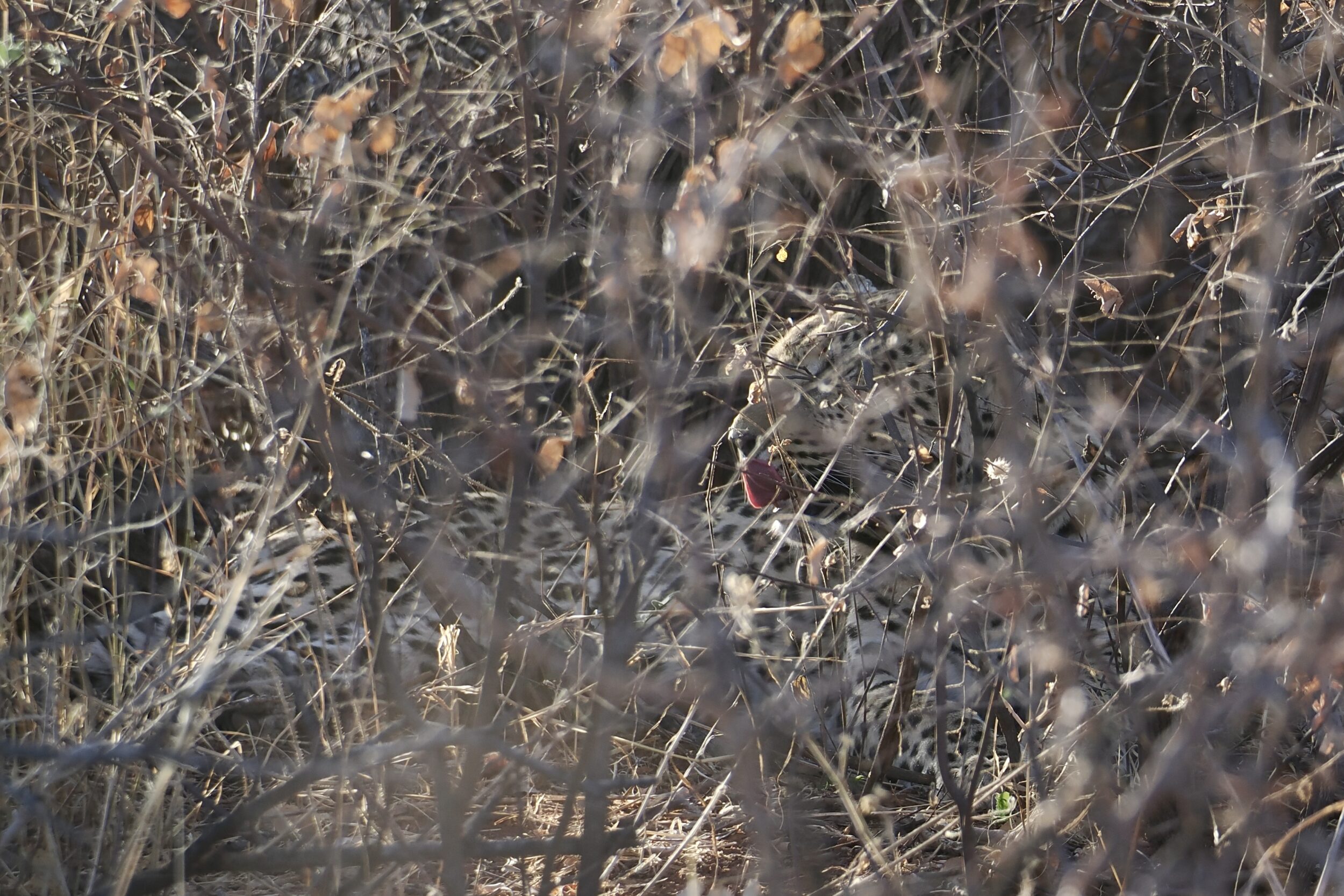
I deliberately took the above photo when Lila’s tongue emerged, and I have “tweaked” the image a bit, to make Lila more readily visible.
Leopards are incredibly good at camouflage!
But for the radio signal telling us that there must be a leopard, somewhere in there, within a few metres of us, we almost certainly would not then have seen Lila.
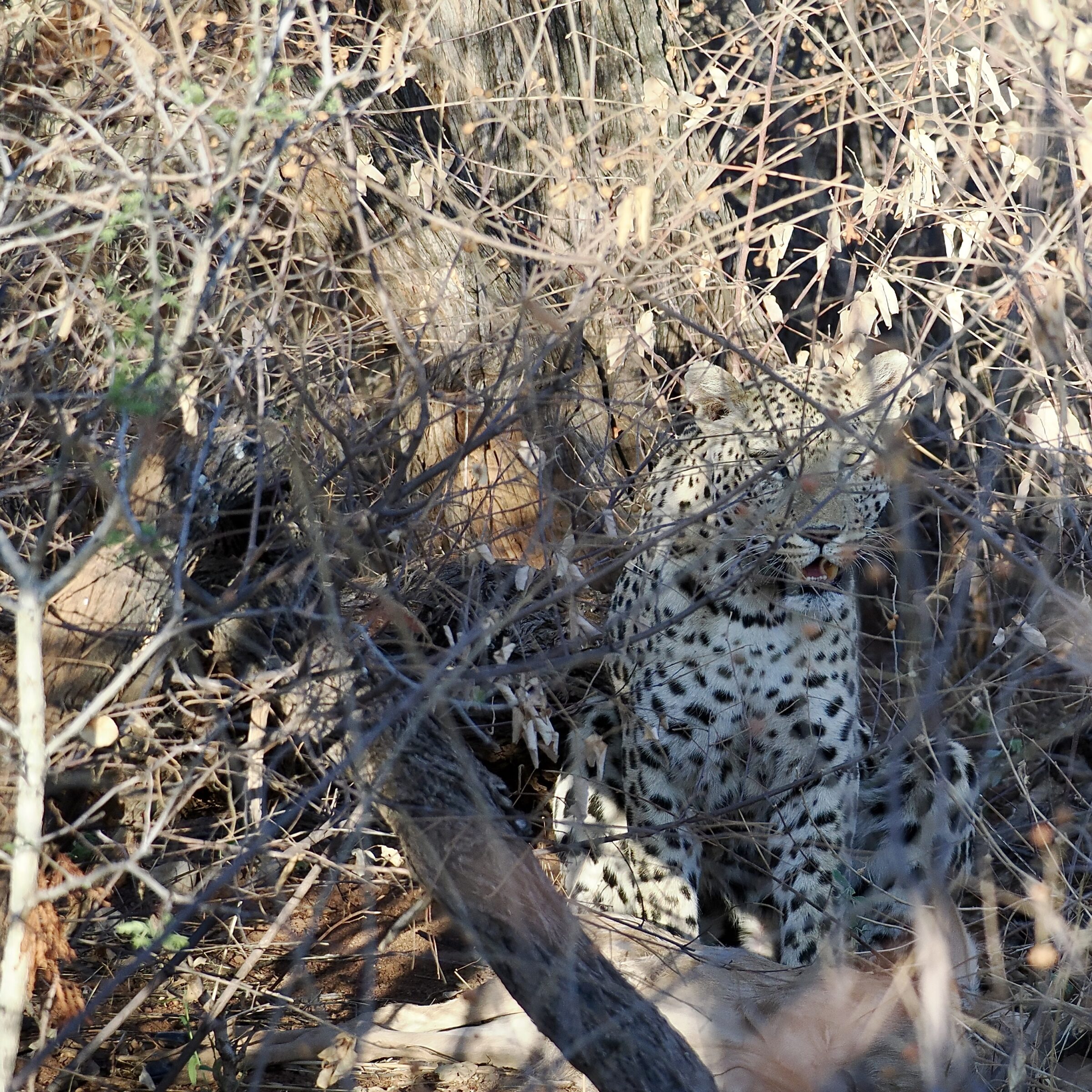
Soon, we were able to see that Lila was sitting, resting, with her very fresh kill – a red hartebeest calf.
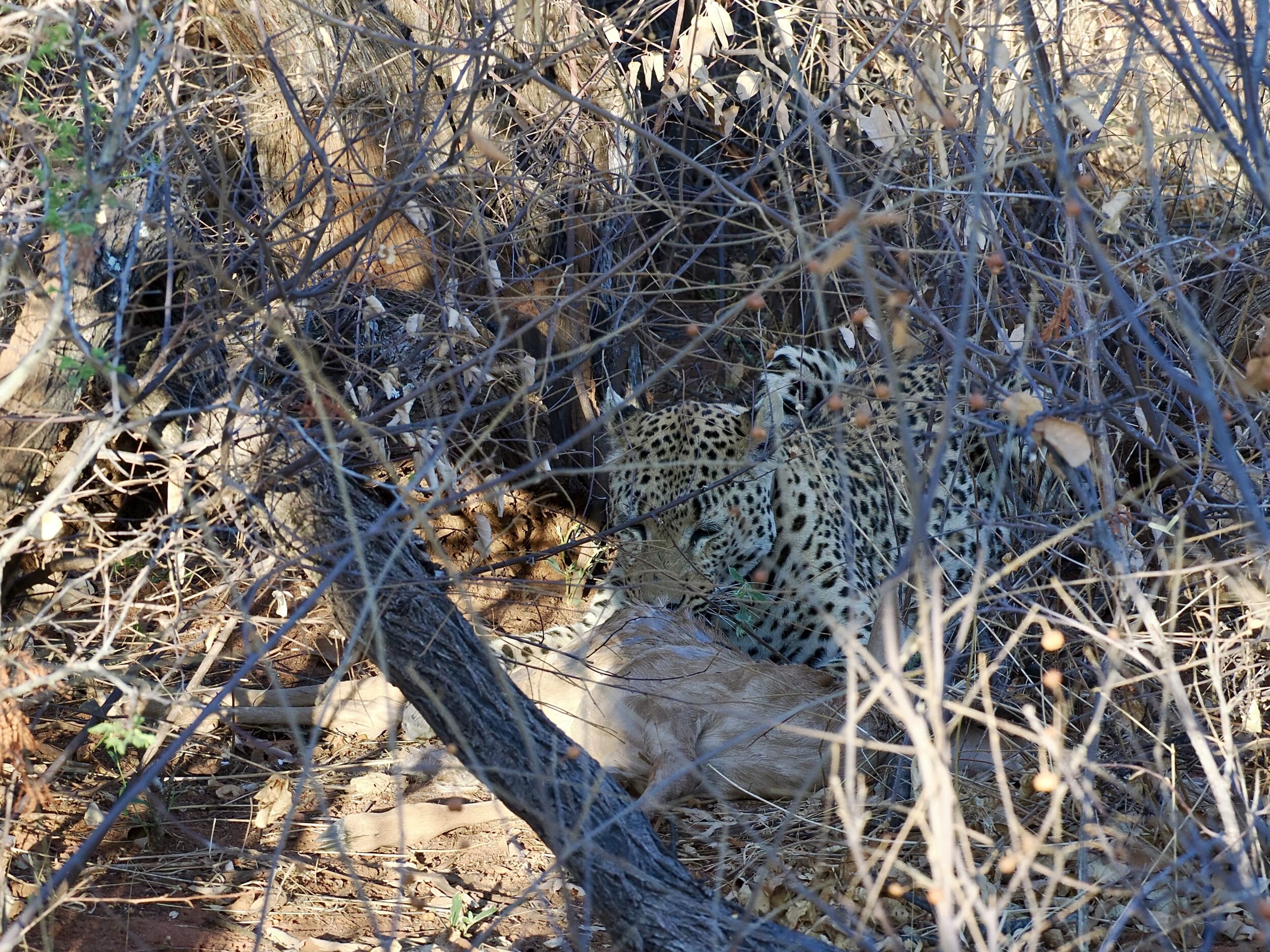
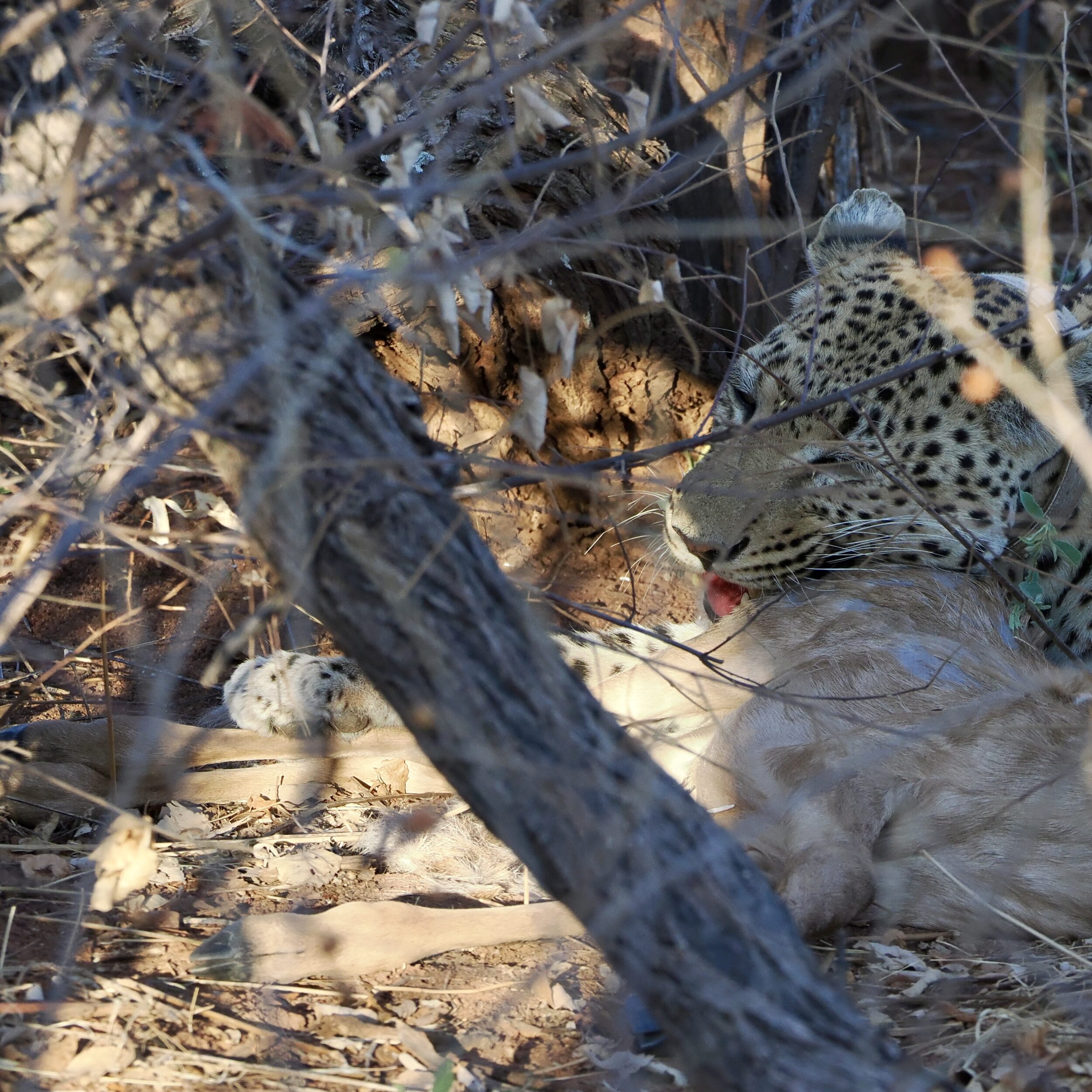
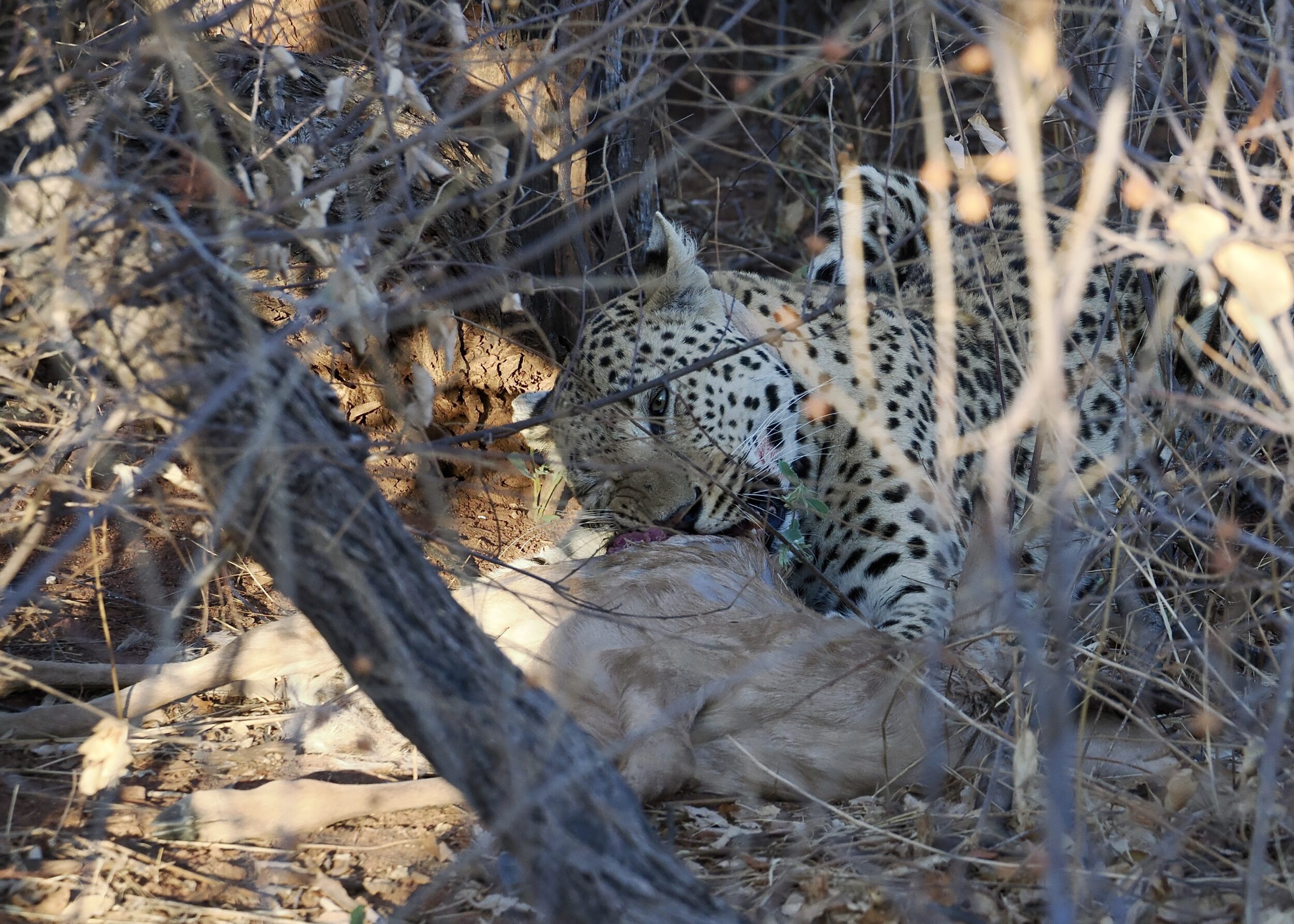
Such a substantial kill was more than “one meal, for one”, and if Lila was to enjoy all or most of the “fruit” of her successful hunt, she would need to move her kill out of the easy reach of jackals, hyenas et al.
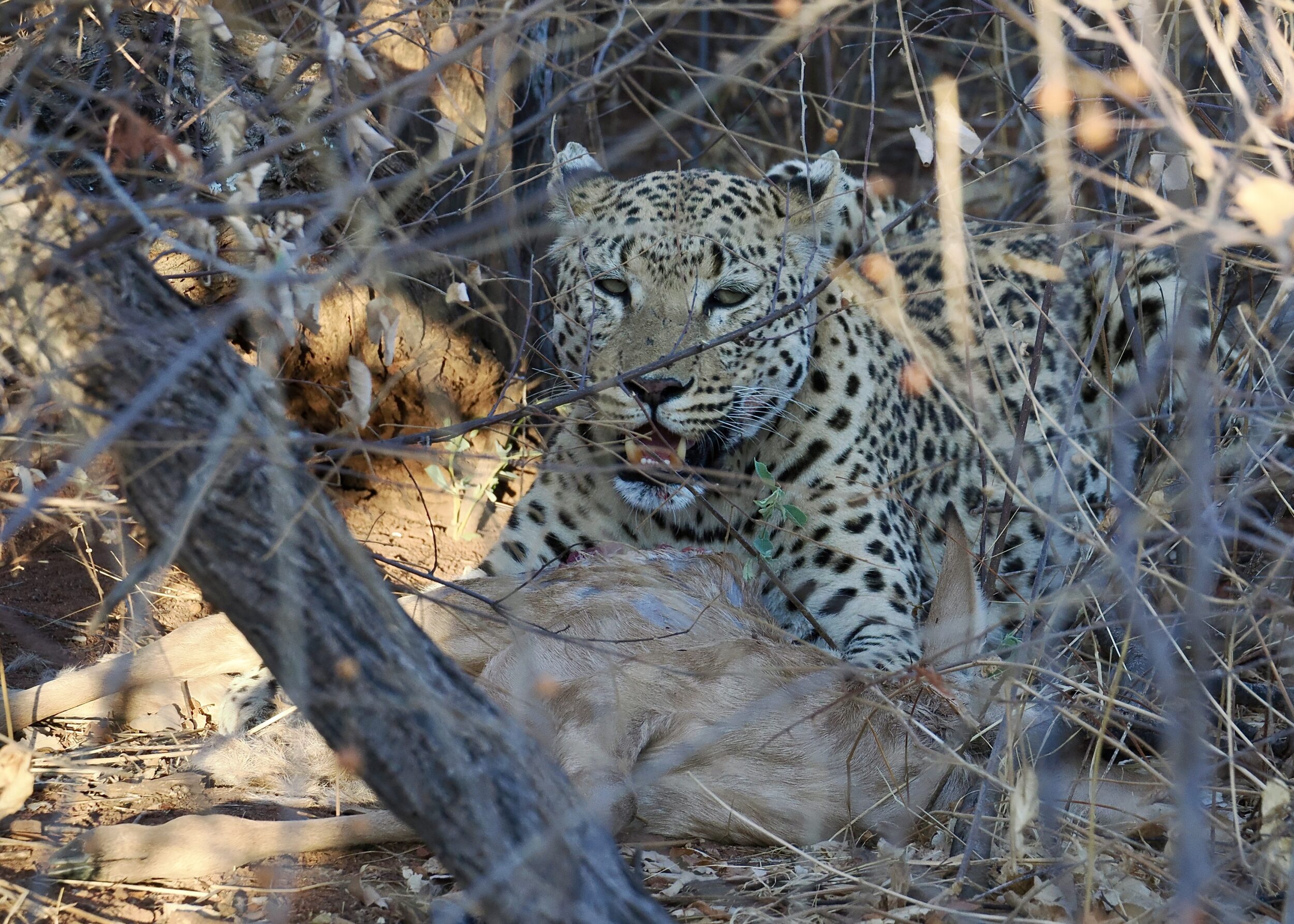
What Lila did next will likely remain the most amazing athletic feat that I have ever seen…and you can see it in the next Namibian post.
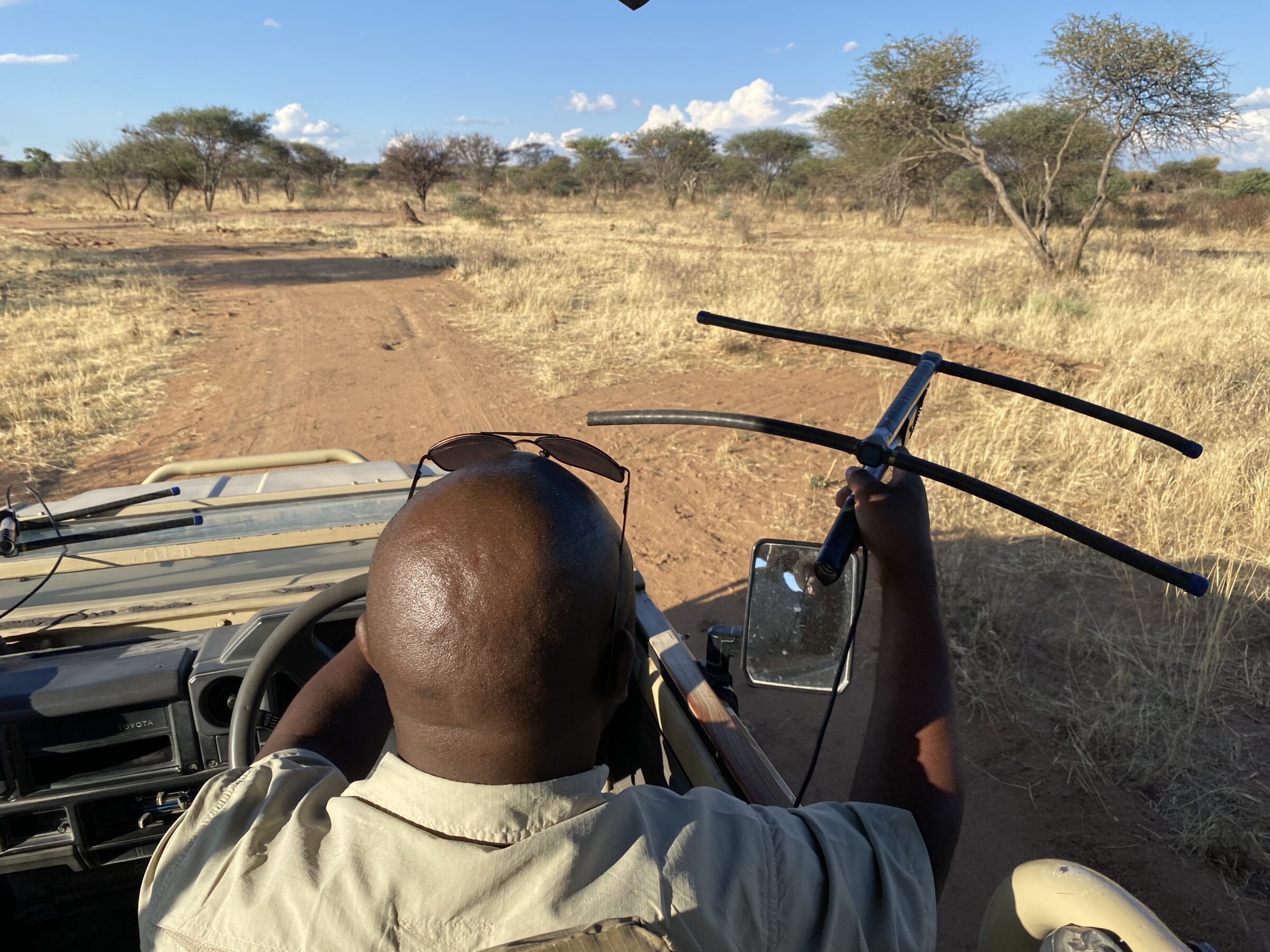
WOW! I can only imagine how wonderfully exciting it would be to get this close to such an amazing animal.